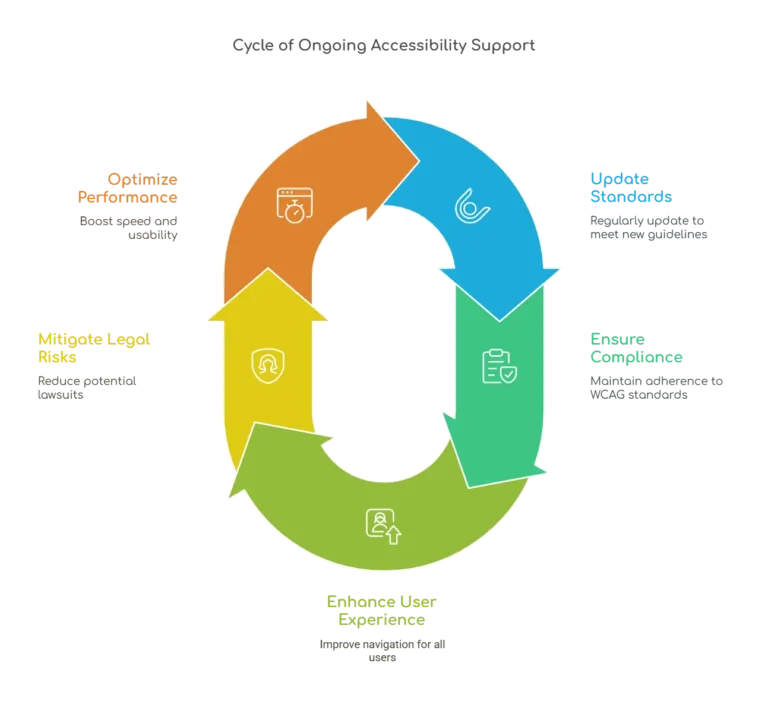In digital healthcare the safeguarding of patient data is paramount. With the growing reliance on medical websites, ensuring security and compliance is no longer an option—it’s a necessity. Patient data protection isn’t just about codes and algorithms; it’s about maintaining trust and upholding the Hippocratic oath in the digital realm. Let’s delve into the vital aspects of security and compliance for medical websites, addressing concerns and shedding light on best practices.
Introduction to Website Security and Compliance
Significance Unveiled: Security and Compliance for Medical Websites
Imagine your website as a clinic’s waiting room, bustling with patients’ confidential data. Just as you’d put a vigilant receptionist to protect patient files, your medical website demands robust security measures. A breach not only exposes sensitive data but erodes trust—a costly prescription no medical professional can afford.
Risks Diagnosed: Consequences of Inadequate Security Measures
When your medical website’s security isn’t airtight, you’re essentially leaving the front door open for cybercriminals. Data breaches, identity theft, and compromised patient records can lead to medical malpractice suits, tarnishing your reputation. Patients seek your expertise for healing, not a data breach diagnosis.
HIPAA Compliance Essentials
Decoding HIPAA: Ensuring Patient Data Protection
In the world of medical website security, HIPAA reigns supreme. The Health Insurance Portability and Accountability Act establishes a patient’s right to data privacy. By adhering to its regulations, medical websites show their commitment to protecting patients’ sensitive information.
Safeguarding Virtue: Applying HIPAA to Medical Websites
Patient data protection is the heartbeat of HIPAA compliance. Medical websites must encrypt data transmissions, secure storage, and ensure that authorized personnel alone have access to patient records. This digital “white coat” of compliance ensures that patient trust is upheld.
SSL Certificates and Data Encryption
SSL: The Digital Lock for Patient Data Protection
Consider SSL certificates the vault where patient data is securely stored. Encryption is your website’s vaccination against data breaches. Just as a locked medicine cabinet prevents unauthorized access, SSL ensures that sensitive patient information remains confidential.
Trust Prescription: Building Patient Confidence
SSL doesn’t just encrypt data; it builds patient trust. When visitors see the padlock icon in their browser, they know their information is in capable hands. It’s like patients spotting your white coat—it symbolizes safety and expertise.
User Authentication and Access Control
Doctor’s Orders: Robust User Authentication
Imagine a multi-factor authentication as your website’s VIP access. It ensures that only authorized medical professionals can enter. Just as patients wouldn’t want strangers rummaging through their medical history, strict user authentication guarantees data’s confidentiality.
Restricting Entry: The Role of Access Control
Access control is the digital equivalent of limiting entry to specific hospital wings. By allowing only authorized personnel to access certain data, you’re maintaining the integrity of patient records. No one wants a nosy neighbor peeking at their medical chart.
Protecting Patient Data Privacy
Confidentiality Upgraded: Patient Data Privacy
Patient privacy isn’t a luxury; it’s a right. Secure storage, encrypted transmission, and proper data processing are your website’s oath of confidentiality. Just as you’d never reveal a patient’s diagnosis without consent, your website must uphold the same ethical standards.
Digital Hippocratic Oath: Ethical Data Handling
Patient data protection means treating digital records as sacredly as physical ones. Ensure that patient data isn’t stored longer than necessary and that it’s anonymized whenever possible. It’s a modern-day Hippocratic oath.
Securing Online Appointment Booking
Booking with Confidence: Secure Online Appointments
Online appointment booking is convenient, but security can’t be compromised. Your website can integrate secure scheduling tools that encrypt data during transmission. Think of it as patients handing their appointment card directly to you.
Appointments Without Anxiety: Security and Convenience
Patients should feel as safe booking appointments online as they do in your office. Integration of secure scheduling tools combines convenience with data security. It’s like having a receptionist who also doubles as a security guard.
You would love to read the blog on Website Development for Healthcare Professionals
Mitigating Cybersecurity Threats
Digital Plague: Common Cybersecurity Threats
Just as a doctor diagnoses ailments, you must identify digital threats. Malware, phishing attacks, and data breaches lurk in the digital shadows. Being aware is the first step in prevention.
Immunity Boost: Strategies Against Threats
A robust cybersecurity strategy is your website’s immune system. Regular updates, strong firewalls, and employee training create a protective shield. Think of it as a digital health regimen.
Mobile Responsiveness and Security
Pocket-Sized Care: Mobile-Friendly Websites
Medical information is now at our fingertips. A mobile-responsive website ensures that patients can access their data conveniently. It’s like offering a pocket-sized medical encyclopedia.
Guardian of the Small Screen: Security for Mobile Users
Mobile security isn’t an afterthought—it’s a primary concern. Secure connections and data encryption apply to smartphones just as they do to computers. Think of it as protecting patient data even on the go.
Regular Updates and Patch Management
Prescription for Performance: Regular Updates
Outdated software is a vulnerability waiting to be exploited. Regular updates are like preventive medicine, keeping your website healthy and secure. It’s time to administer that digital vitamin.
Digital Check-Up: Patch Management
Think of patches as your website’s stitches. They close vulnerabilities and prevent infections. Regular patch management is akin to providing first aid to your website’s security.
Preparing for Audits and Assessments
Facing Scrutiny: Security Audits and Assessments
Just as you’d prepare for a medical examination, your website must be ready for audits. Security assessments ensure you’re following the best practices in patient data protection. It’s a healthy evaluation.
Compliance Check: Ongoing Adherence
Being compliant is an ongoing commitment. Keep a checklist handy to ensure your website meets industry standards. It’s like conducting regular check-ups for your website’s health.
Conclusion
Patient data protection isn’t just a buzzword—it’s a duty. Just as medical professionals safeguard their patients’ well-being, they must also protect their digital well-being. By adhering to HIPAA compliance, employing SSL encryption, and implementing robust security measures, medical websites can maintain patient trust, uphold ethical standards, and ensure that the digital world is as secure as the physical one. Remember, a secure website is the best prescription you can offer to your patients.
Safeguard your patients’ data today.








